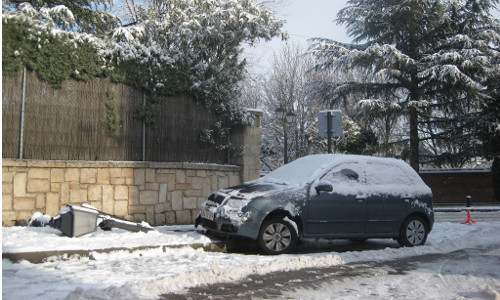By Tom Davis
Markham, Ontario — November 27, 2017 — Winter is coming. Snow has breached the skyline and some of us have already skidded on a steep road. As we all head into the most dangerous driving season, it’s important to look into collision rates. A new study has found a 2.5 percent increase in the number of automotive collisions across Canada – and it seems Ontario is to blame.
Allstate Insurance Company’s latest Canada Safe Driving Study found that while Ontario’s collision frequency rate was not the highest, the province reported an overall increase of 4.7 percent in collision rates. This was driven by metropolitan Toronto and central Ontario, which saw an increase of 8.5 percent and 5.5 percent, respectively.
The company’s ninth-annual study spanned a 24-month period beginning July 1, 2015, through June 30, 2017, and compared this to its previous study between July 1, 2013 and June 30, 2015. The data is used to rank communities in the provinces studied according to their collision frequency rate.
The five communities with the greatest increases in collision frequency rates were found in southern, central and eastern Ontario. David MacInnis, Vice President of Product Operations at Allstate Insurance Company of Canada, said: “These results show there is still a lot of work to be done to help reduce collisions, especially as we head into what is typically the most dangerous driving season of the year.”
Northern Ontario, however, saw a decrease of 5.1 percent. This was reflected in Hanmer – the community that claimed the top spot with the lowest collision frequency rate in Canada – and in Garson, which saw the most significant decrease in its collision frequency rate – down 37 percent.
New Brunswick was, once again, ranked the safest province to drive in, with a collision frequency rate of 5 percent – a reduction of 6.5 percent since the company’s previous study between 2013 and 2015. Common causes of loss in the province came from collisions involving parked cars, followed by collisions caused by turning and intersections.
Northern Ontario’s Hanmer takes the top spot as the safest community in Canada, with a collision frequency rate of 3.65 percent. Halifax, for the third consecutive year, is the community with the highest collision frequency rate at 7.9 percent.
Alberta came in as the second safest province with a collision frequency rate of 5.5 percent, a 5.7 percent reduction in collisions since the last study. The province is also home to three of the top five safest markets based on collision claims – Spruce Grove, number two; Lethbridge, number four; and Medicine Hat, number five.
Nova Scotia saw a reduction in collision claims of 4.1 percent, and Halifax once again ranked at the bottom of the pack with a 7.9 percent collision frequency rate (compared to the second-lowest, Ajax, Ontario, at 7.4 percent).
Collisions involving pedestrians and cyclists were found to be the most severe. In Alberta, New Brunswick and Ontario, the second-highest type, in terms of severity, was head-on collisions between two or more cars, while the second highest in Nova Scotia was collisions that occur while turning or in an intersection.
“It’s clear that in many communities across Canada, collisions involving those walking or cycling happen far too often,” commented MacInnis. “Our study reinforces the need to talk about what can be done to help reduce these collisions to improve the safety of everyone using our roads, whether they’re in a vehicle, on a bike or on foot.”





































